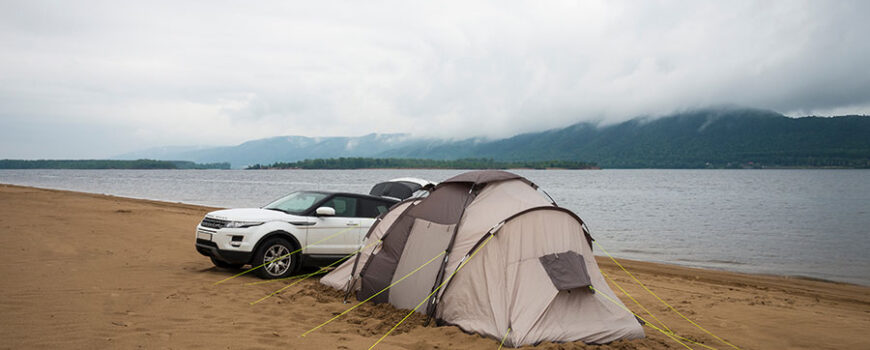The Range Rover engine lineup represents a careful balance of power, reliability, and engineering excellence. These sophisticated powertrains have evolved from proven V8 configurations to the latest hybrid technologies, each telling its own story of innovation. For those who appreciate automotive excellence, understanding these powertrains isn’t just about numbers – it’s about experiencing how decades of engineering refinement translate into real-world capability.
This comprehensive guide examines each engine option’s capabilities, maintenance requirements, and real-world performance characteristics, helping Range Rover owners make informed decisions about their vehicle’s care and operation.
Range Rover Engine Options Overview
Building on decades of engineering excellence, these powertrains combine sophisticated technology with practical performance. Think of it as having different tools for different jobs – each engine variant is carefully calibrated to meet specific driving needs while maintaining the brand’s legendary capabilities. Whether it’s responsive city handling in Kuala Lumpur’s urban grid, or engaging in torque-rich climbs to Cameron Highlands, there’s an engine configuration perfectly suited to your lifestyle.
V6, V8 & Hybrid: Understanding Your Engine Choices
The 2025 Range Rover offers Malaysian buyers a diverse powertrain portfolio:
- Ingenium 3.0L 6-Cylinder Mild Hybrid (395 hp, 406 lb-ft)
- Twin-Turbo 4.4L V8 (523 hp standard, up to 606 hp in SV)
- PHEV P460e (Combined 460 hp, 660 Nm torque)
- PHEV P550e (Combined 550 hp, 800 Nm torque).
Engine Technology Advances: From TDV6 to L460 V8
The latest L460 generation Range Rover showcases significant technological advancement. It’s fascinating how far engine technology has come, with features that would have seemed like science fiction just a decade ago:
- All engines feature 8-speed automatic transmission
- Advanced start-stop technology
- Integrated electric supercharging
- Twin-scroll turbochargers
- Precision direct fuel injection.
Power and Performance Comparison
Understanding the performance characteristics of each engine option helps in selecting the ideal powertrain for specific driving requirements. It’s not just about raw power – it’s about how that power is delivered and, more importantly, how it feels behind the wheel. Each variant offers distinct advantages that become apparent in different driving scenarios.
Engine Output: Horsepower & Torque Analysis
Each Range Rover powertrain offers distinct performance characteristics, and here’s where the numbers tell an interesting story:
| Engine Type | Horsepower | Torque (Nm) | 0-60 mph |
| 3.0L I6 MHEV | 395 | 550 | 5.8s |
| 4.4L V8 | 523 | 750 | 4.4s |
| P460e PHEV | 460 | 660 | 5.6s |
| P550e PHEV | 550 | 800 | 4.8s |
Urban & Highway Performance: Real Malaysian Driving
In Malaysian conditions, each Range Rover engine variant demonstrates specific strengths that become particularly apparent during daily use:
- The 3.0L MHEV excels in daily urban driving, perfectly balanced for stop-start moments in traffic
- V8 models deliver effortless highway overtaking, making light work of intercity drives
- PHEV variants offer quiet electric-only operation in city traffic
- All versions feature terrain-specific driving modes.
Efficiency Across Engine Types
Modern luxury demands both power and efficiency. The latest engine lineup demonstrates remarkable fuel economy without compromising performance, achieved through advanced engineering and innovative technology.
Fuel Economy: City vs Highway Consumption
Fuel efficiency varies significantly across the range:
| Engine Type | Combined MPG | City MPG | Highway MPG |
| 3.0L I6 MHEV | 24.5 | 21.2 | 27.8 |
| 4.4L V8 | 18.7 | 16.1 | 21.3 |
| P460e PHEV | 75.3* | 70.6* | 80.1* |
*When utilising both electric and gasoline power
Smart Economy: Start-Stop Tech & Fuel Requirements
Modern Range Rover engines incorporate multiple efficiency features:
- Intelligent stop-start system
- Active aerodynamics
- Energy recuperation during braking
- Premium fuel optimisation
- Electric mode for PHEVs with up to 70km range.
Off-Road Capability by Engine Type
While on-road performance is essential, true capability reveals itself in challenging conditions. Each engine configuration is specifically tuned to deliver optimal power and control across various terrain types.
Terrain Response: Engine-Specific Performance
Each engine type offers specialised off-road characteristics:
- V8 models provide maximum torque for challenging terrain
- PHEV variants offer precise electric torque control
- All versions feature Terrain Response 2 with engine-specific calibration
- Intelligent driveline distribution based on engine output.
Malaysian Terrain: Heat Management & Cooling Systems
Specifically engineered for Malaysian conditions:
- Enhanced cooling systems for high ambient temperatures
- Wading depth up to 900mm across all engine variants
- Optimised air intake positioning
- Advanced thermal management systems
- Humidity-resistant electronic systems.
Dominate Every Drive with Range Rover Engine Experts at Sun Eng Hup
For unmatched Range Rover engine expertise in Malaysia, Sun Eng Hup delivers specialised knowledge across the entire powertrain range. Our certified technicians understand the unique requirements of each Range Rover engine variant, ensuring optimal performance in Malaysian conditions.
With our comprehensive diagnostic capabilities and genuine parts supply, our team will safely maintain your Range Rover’s exceptional engineering standards. Book a professional diagnostics session today.

